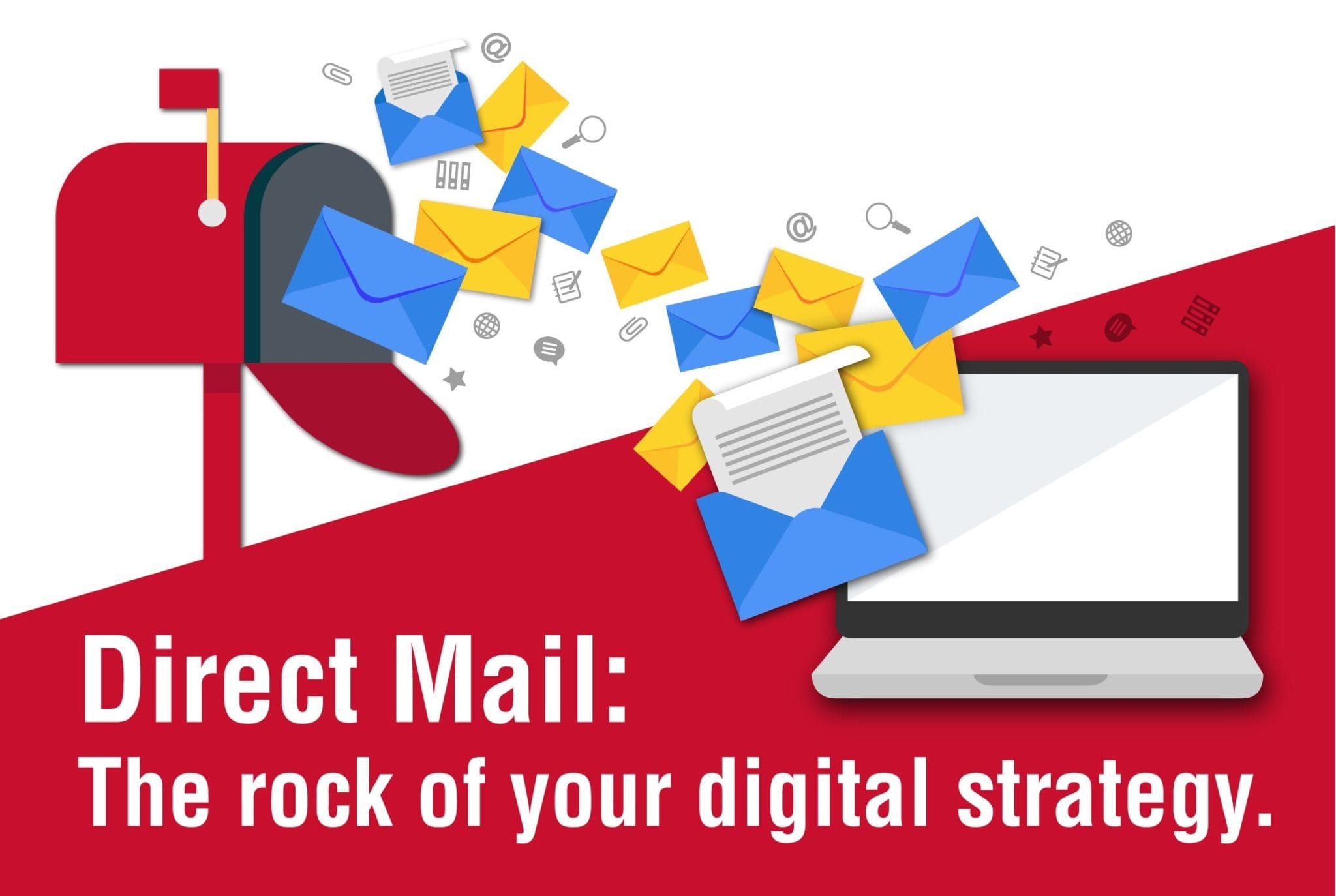Direct Mail: The Rock of Your Digital Strategy

This article was originally featured in the Direct Marketing Association of Washington’s April 2020 issue of AdVents.
The birth of digital marketing brought forth a realm of new possibilities for direct marketers. However, challenges around how to create and implement successful digital campaigns alongside direct mail campaigns were rampant due to inconsistencies in strategy, and the belief that these channels should be addressed separately. Additionally, the creation of digital departments alongside direct mail departments created new issues within operation structures across the vertical. These challenges were overwhelming for some print-native marketers, and it led to about a decade of combative “what to do” and “what to avoid” lists.
The mistake that ended up happening: Many began to view digital and direct mail as two completely separate entities, while still intending for them to work together. This created silos of thinking, preventing maximized results. Think of it like diet and exercise. We all know you need both to accomplish your health goals. In direct marketing, digital and direct mail need to be operating in tandem to achieve your best results, and from this the omnipresent approach was inspired.
If my several years of operating omnipresent campaigns for a variety of clients have taught me anything, it’s that it is easy to overcomplicate digital strategy by overthinking and isolating it. But it’s really quite simple. Omnipresent digital strategies can be assessed by mirroring the structure of a classic direct mail campaign strategy.
Step 1: Assess your data.
Whether the KPI for your campaigns are leads generated, traffic driven, or donations/sales/etc., the metric we care about is transactions completed. So, the first step is to get the campaign in front of the correct audience, right? In digital we utilize the same data processes as in direct mail: segmenting, carving down to the most effective data, and applying the available segmentation to our overall strategy. This has led to advances in data technology, with the birth of Artificial and Business Intelligence, Machine Learning, Reverse IP Address Targeting, etc.
Step 2: Identify that audience’s first impression of your campaign.
In digital, paid search/social ads act similarly to the OE; they are the first impression our audience has with our campaign. So this piece needs to be compelling and get them engaged to take the first step, especially since such a small percentage actually click through and convert in the first place. For an email campaign, subject lines, preheaders, and senders serve as the digital “teaser” on the OE, enticing the individual to find out more. Of course, and just like in direct mail, testing is a MUST in order to maximize your CTR and conversions!
Step 3: Convince your audience to convert.
Emails act within digital strategy the way letters act within direct mail packages. They are most often the driving force behind the recipient’s conversion. Whether by way of an emotional appeal from a veteran meant to drive donations, or a clear statement of benefits to encourage membership, both the letter of a traditional direct mail package and an email carry a similar purpose and structure. Really, you could break this down even further, with your direct mail inserts performing the same secondary call-to-action as a footer graphic in an email.
Step 4: Convert.
Many ultimately see this step as the piece of the strategy that differentiates direct mail and digital. Mainly, this is because in direct mail there could be a reply device that acts as the “result” measured, and in digital you’d likely go to a landing page (though many have utilized PURLs, and then moving onto URLs in direct mail in recent years). Because of this, the strategy, or even the utilization, of a landing page is either overlooked or overcomplicated by many print-native marketers. The same strategies apply here as they do to your reply device: you want to provide enough information so that your audience is comfortable converting, but make it concise enough so that you don’t deter them (ex: give them several calls-to-action, or too many external links in digital, etc.).
Step 5: The ongoing UX, Donor Journey, etc.
With the birth of the omnipresent approach, we are able to do so much more in terms of enhancing the user experience, but the overall strategy remains focused on retention. Your UX/donor journey needs to be top of mind even when addressing your program on a campaign-by-campaign basis. No matter their channel of preference (though this should be tracked), each convert should be applied to your ongoing data segmentation, breaking down what you know about their behavior given their activity, so that you can contact them in the future, and know how to do so most effectively.
Moral of the story: We all know that year-over-year, digital facets seem to grow in capability and complexity. My advice: In this ever-changing world, let the proven successes from direct mail be the “rock” for your digital strategy. There is no reason to overlook and overthink when the answers have been evolving in front of us for decades.
